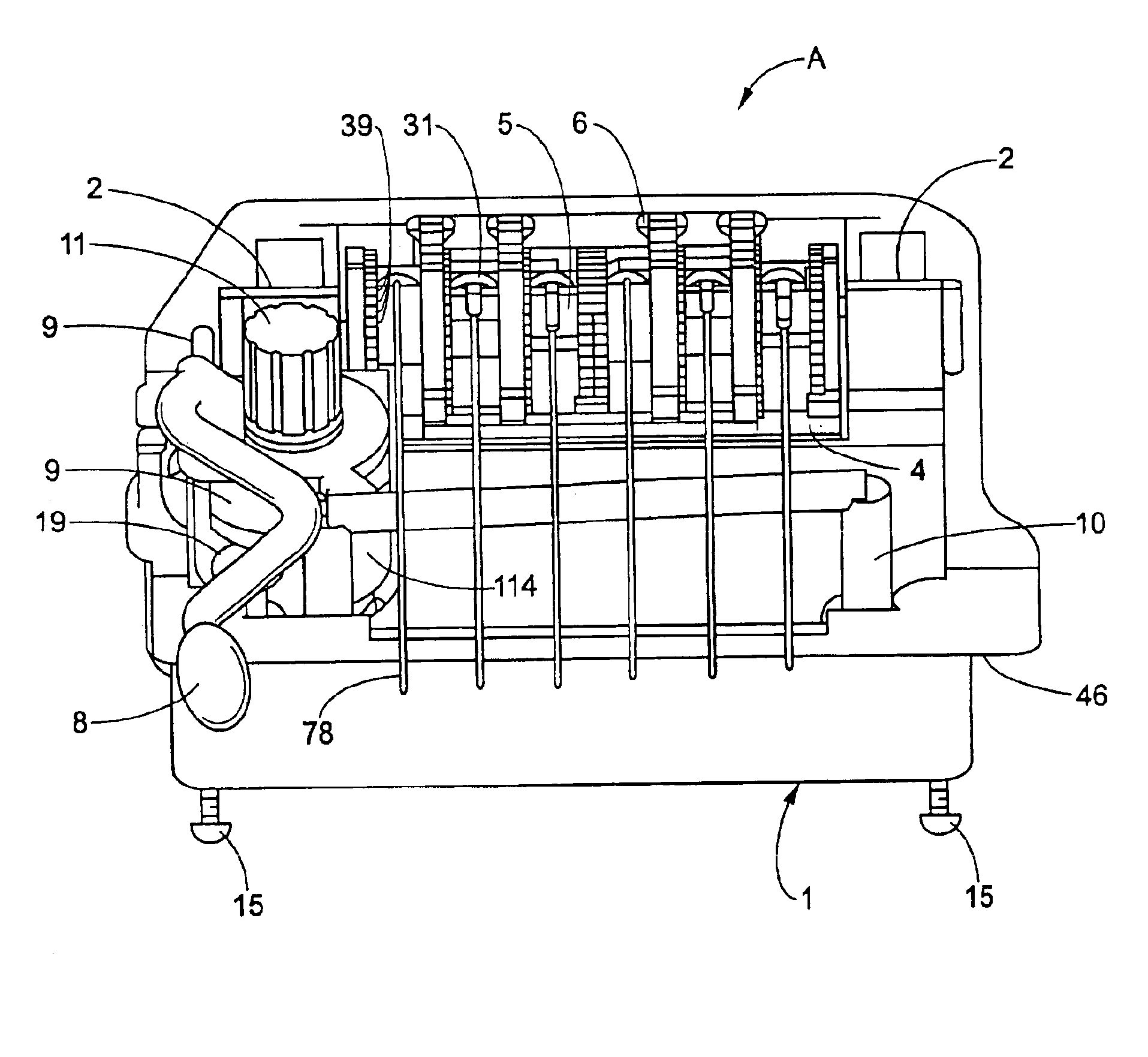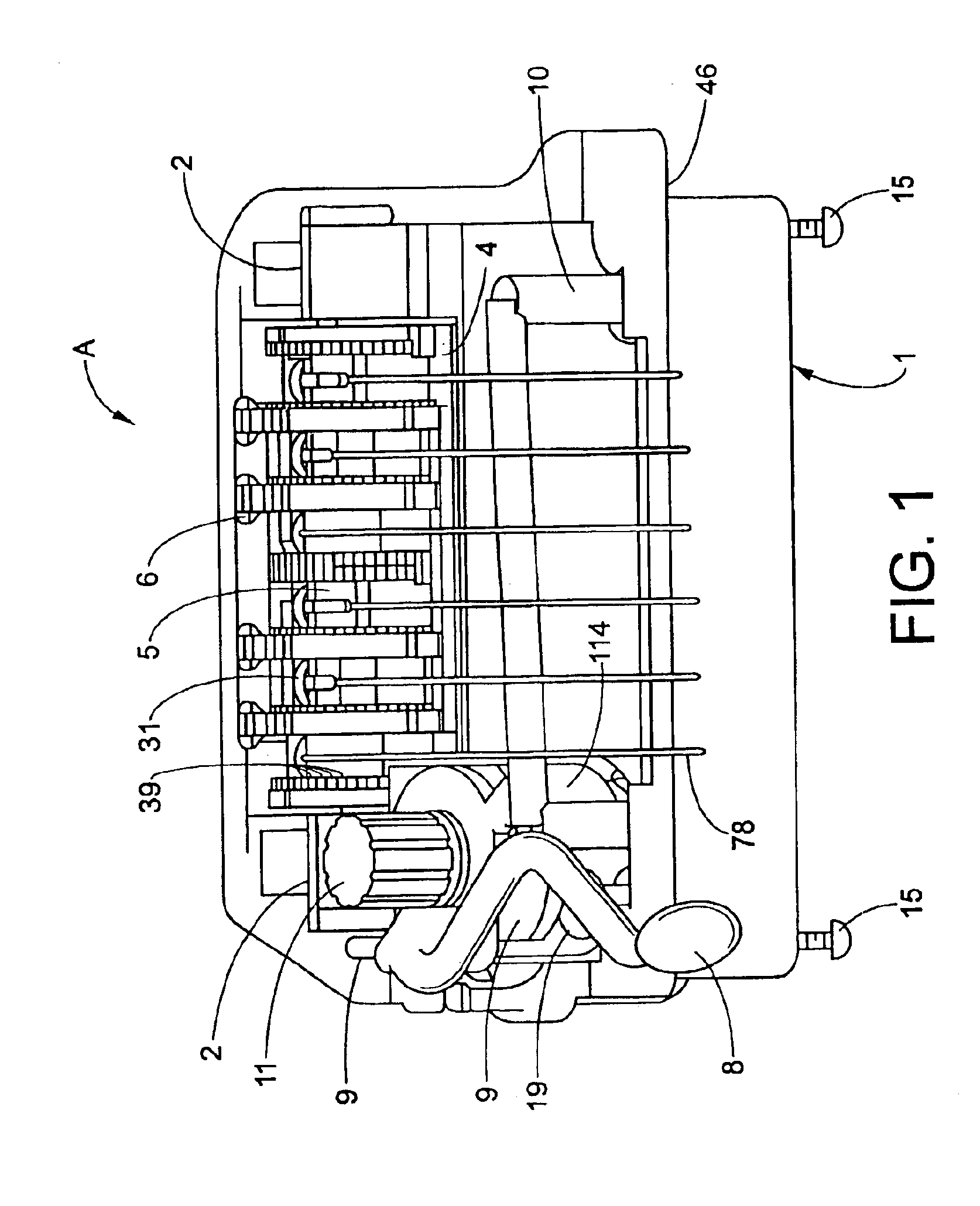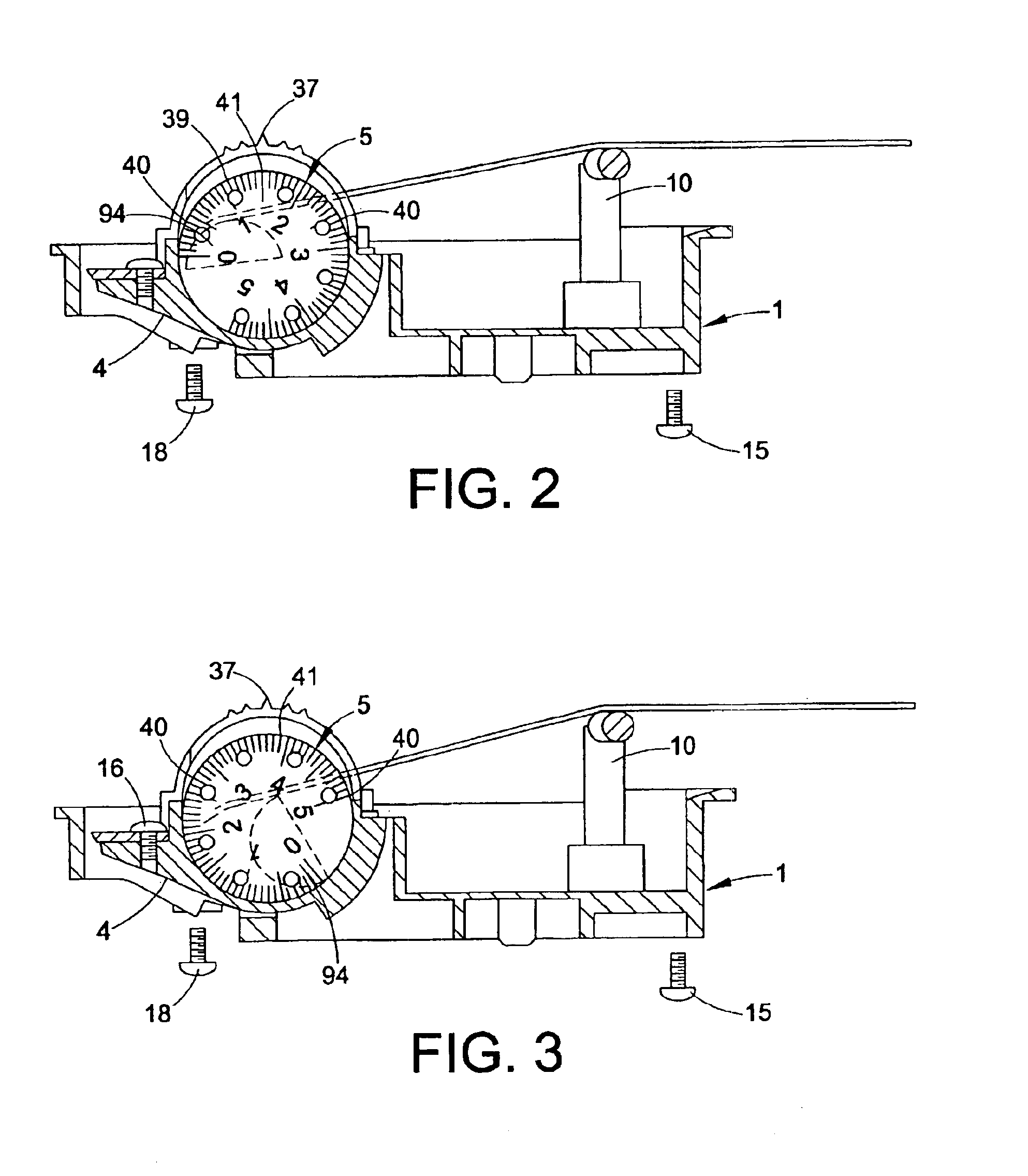Tremolo device for a stringed musical instrument
- Summary
- Abstract
- Description
- Claims
- Application Information
AI Technical Summary
Benefits of technology
Problems solved by technology
Method used
Image
Examples
Embodiment Construction
Referring now to the FIGURES, wherein the showings are for purposes of illustrating preferred embodiments of the invention only and not for purposes of limiting same, FIG. 1 illustrates a preferred embodiment of the present invention.
An inventive tremolo device is to be mounted onto the body of a stringed musical instrument having a plurality of strings. The musical instrument includes, in order along the path of each string, 1) a portion of the tremolo device that anchors each string using the end of the string with an anchoring protrusion, 2) a portion of the tremolo device that supports and unreels the string between an anchoring plate of the device and a bridge, 3) the bridge, including saddles that will support the string but allow the string to slide with minimal friction, 4) a section to accommodate electronic pick up devices to be used to feed amplification or sound-shaping devices, 5) a neck section, either fretted or fretless onto which the string can be pressed to effecti...
PUM
 Login to View More
Login to View More Abstract
Description
Claims
Application Information
 Login to View More
Login to View More - R&D
- Intellectual Property
- Life Sciences
- Materials
- Tech Scout
- Unparalleled Data Quality
- Higher Quality Content
- 60% Fewer Hallucinations
Browse by: Latest US Patents, China's latest patents, Technical Efficacy Thesaurus, Application Domain, Technology Topic, Popular Technical Reports.
© 2025 PatSnap. All rights reserved.Legal|Privacy policy|Modern Slavery Act Transparency Statement|Sitemap|About US| Contact US: help@patsnap.com



